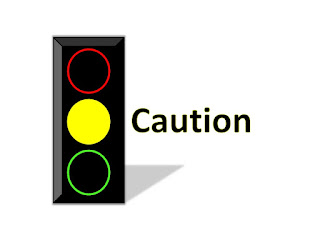Cyanos Acivity July 1
Water is clean for recreation.
Disclaimer: The information presented below reflects conditions throughout the lake and may differ from conditions on specific shorelines. For information regarding beach closings please contact the Torrington Area Health District or local town officials.
On July 1st AER visited Bantam Lake to conduct biweekly cyanobacteria as part of the ongoing lake management program. Water column profile and Secchi transparency data were collected from the North Bay Site (N 41.71087° W -73.21155°), the Center Lake Site (N 41.70056° W -73.22102°), a site west of Folly Point (N 41.70773 W -73.22638), and at a site in the South Bay region of the lake (N 41.69015 W -73.22728).
Samples collected for algal identifications and enumerations were from the North Bay, Center Lake, and South Bay sites. We report on the former two here. A plankton net tow sample, using a 10µm mesh plankton net, was collected at the Center Lake site. Samples were treated, stored and analyzed following methods discussed in previous memos.
Secchi transparencies at the four sites on July 1st were similar to those measured on June 19th and generally good. Secchi measurements were similar at the North Bay, Center Lake, and Point Folly sites, and modestly lower at the South Bay site (Table 1).
As observed on June 19th, a total of 24 algal genera were observed from the July 1st net tow sample and integrated water samples. The diversity of cyanobacteria and green algae increased modestly to 9 and 8 genera, respectively (up from 6 and 7 representative genera) and golden algae diversity decreased from 5 to 1 genus.
Notable change in the cyanobacteria genera and cell concentrations occurred between June 19th and July 1st. Cyanobacteria cell concentrations at North Bay and Center Lake sites increased from 4,113 and 3,345 cells/mL on June 19th to 9,276 and 12,355 cells/mL on July 1st, respectively. The most abundant genus was Dolichospermum spp. which comprised 53 to 72% of the total cells. The cyanobacteria Aphanizomenon spp. and Gomphosphaeria spp. were also important constituents of the algal community. Dolichospermum spp. and Aphanizomenon spp. can form harmful algal blooms when concentrations are high. It will be important to carefully monitor conditions over the next several weeks.
Water temperatures at the surface had increased to just above 24°C at North Bay, Center Lake and Folly Point sites. Temperatures at the bottom of the water column were just over 19°C at those respective sites. The temperature / density gradient at those sites resulted in stratified conditions with moderate to strong resistance to mixing. Resultingly, oxygen concentrations at the very bottom of the water column were <0.1mg/L at North Bay and Folly Point sites. Oxygen levels in the bottom three meters of the water column at the deeper Center Lake site were ≤0.12mg/L. At South Bay, the water column was mixed. The bottom water oxygen concentrations there were 1.3mg/L which was down modestly from the 5.4mg/L measured on June 19th .
Data is collected and analyzed by Aquatic Ecosystem Research, who is contracted by Bantam Lake Protective Association.
On July 1st AER visited Bantam Lake to conduct biweekly cyanobacteria as part of the ongoing lake management program. Water column profile and Secchi transparency data were collected from the North Bay Site (N 41.71087° W -73.21155°), the Center Lake Site (N 41.70056° W -73.22102°), a site west of Folly Point (N 41.70773 W -73.22638), and at a site in the South Bay region of the lake (N 41.69015 W -73.22728).
Samples collected for algal identifications and enumerations were from the North Bay, Center Lake, and South Bay sites. We report on the former two here. A plankton net tow sample, using a 10µm mesh plankton net, was collected at the Center Lake site. Samples were treated, stored and analyzed following methods discussed in previous memos.
Secchi transparencies at the four sites on July 1st were similar to those measured on June 19th and generally good. Secchi measurements were similar at the North Bay, Center Lake, and Point Folly sites, and modestly lower at the South Bay site (Table 1).
As observed on June 19th, a total of 24 algal genera were observed from the July 1st net tow sample and integrated water samples. The diversity of cyanobacteria and green algae increased modestly to 9 and 8 genera, respectively (up from 6 and 7 representative genera) and golden algae diversity decreased from 5 to 1 genus.
Notable change in the cyanobacteria genera and cell concentrations occurred between June 19th and July 1st. Cyanobacteria cell concentrations at North Bay and Center Lake sites increased from 4,113 and 3,345 cells/mL on June 19th to 9,276 and 12,355 cells/mL on July 1st, respectively. The most abundant genus was Dolichospermum spp. which comprised 53 to 72% of the total cells. The cyanobacteria Aphanizomenon spp. and Gomphosphaeria spp. were also important constituents of the algal community. Dolichospermum spp. and Aphanizomenon spp. can form harmful algal blooms when concentrations are high. It will be important to carefully monitor conditions over the next several weeks.
Water temperatures at the surface had increased to just above 24°C at North Bay, Center Lake and Folly Point sites. Temperatures at the bottom of the water column were just over 19°C at those respective sites. The temperature / density gradient at those sites resulted in stratified conditions with moderate to strong resistance to mixing. Resultingly, oxygen concentrations at the very bottom of the water column were <0.1mg/L at North Bay and Folly Point sites. Oxygen levels in the bottom three meters of the water column at the deeper Center Lake site were ≤0.12mg/L. At South Bay, the water column was mixed. The bottom water oxygen concentrations there were 1.3mg/L which was down modestly from the 5.4mg/L measured on June 19th .
Data is collected and analyzed by Aquatic Ecosystem Research, who is contracted by Bantam Lake Protective Association.



